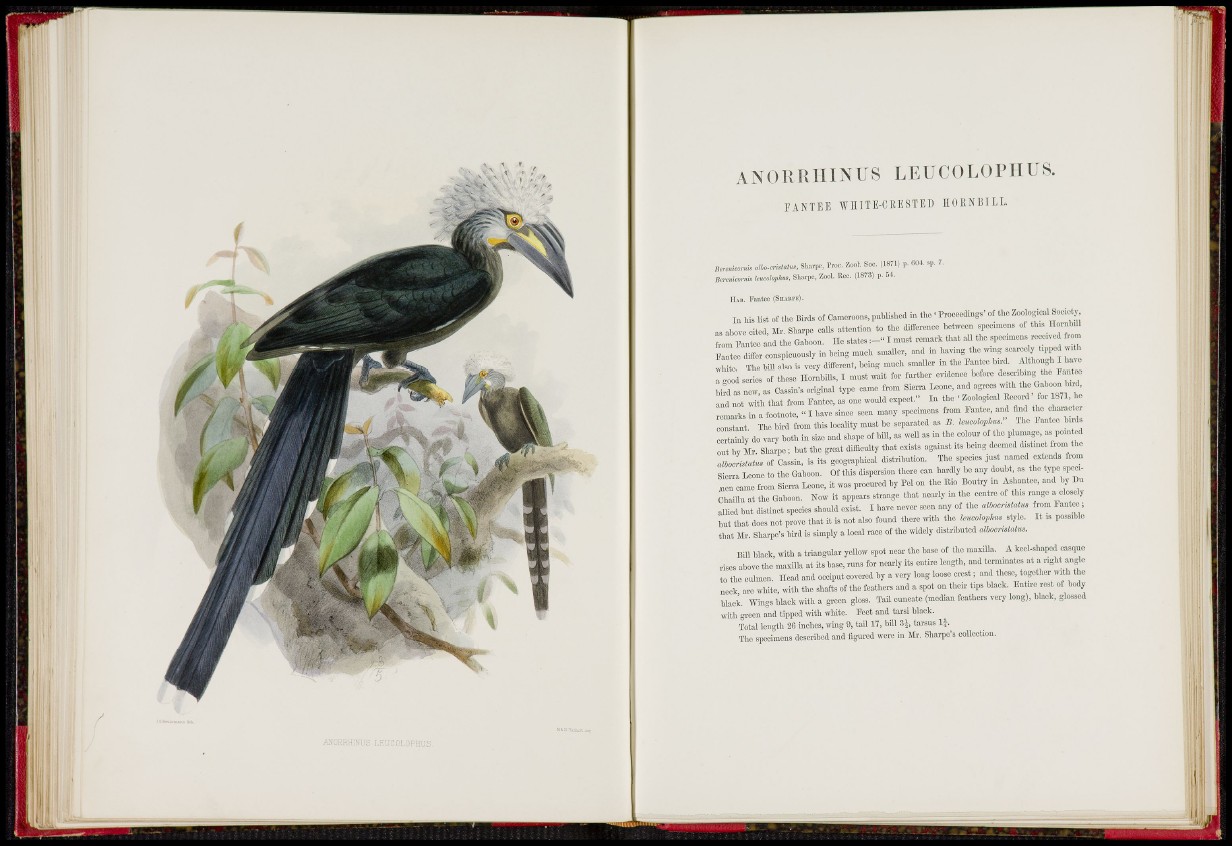
A N O R R I I I N U S L E U C ( ) L ( ) r i l U 8 .
F A N T E E WIIITE-CBESTED nOKNBlLL.
Shan«, Proo. ZooV. Soc. (1871) p. Ml . «p.
B m i c « - » . tototopi« Stan«. ZooL K«»' (18«) p. 51.
Had. Fantce (Siiarpb}.
I „ Lis « oE tho Bird, of C — n . p n b l i « m • P r o o o o d i n s s ' of t h . ^oologi»! Sooirt^^
„B abovo citod, Mr. Sharpo oalls »ttantioi to tho diffomico tetwcon s p — o f lloi ntaU
I ^ J L t e and th. Gaboon. He statos I must ron,a,k tbat aU tho .pco,mons i-ocoi.c t " -
Z t o o ffikr conspicuous, in being much Binallcr, and in bal ing tl» wing soarccly .ippcd jv.tb
w ° r The bill a L i. different, being mucb smaller in tbc Eantce bird. Altbougl, I b ™
r " d J r e. of the» Horlbilb, I must wait for further o.idonco before deserrb.ng the Fanteo
« as n Z a s Cassin's original t „ e came fronr Sierra Leone, and agrees , ^ t b •
and net wi h that from Fantoe, a . one would cxpect." In tho • Zoological Keeord for 1871, ho
n X l a footnote, " I have since seen man, specimens from Fantee, and find the eliarader
c n s t l . The bird from this locality must be separated as ii. lenoolot,l,us." The Eantee birds
r t a i n l , do T. r y both in d » and shape of bill, as well as in the colour of the plumage, as pointed
out b , Mr. Sharpc; but the great difBculty that exists against its being deemed distinct from the
of Cassin, is its geographical distribution. Tlio species just named extends f»in
Sierra Leone to the Gaboon. Of this dispersion tiiore can hardl, bo a n , doubt, as the type spcci-
^ n eame frem Sierra Leene, it was procured by Pel on the Bio Bcutry in Ashantce, and b, I u
Chaillu at the Gaboon. Now it appears strange that nearly in the centre of his range a close y
allied but distinct species should erist. I have never scon any of the a U o c rMm from Eantee,
but that does net prove that it is not also found there with the ¡»„¡»,14« style. It is possible
that Mr. Sharpc's bird is simply a local race of the widely distributed alboonsialm.
Bill black, with a triangular yellow spot near the base of the marilla. A kcel-sbaped casquo
rises above the maxilla at its base, runs tor nearly its entire length, and terminates at a r ight angle
to the culmen. Ilead and coeiput covered by a v e r , long loose erest; and these, together with tiic
neck are white, with the shafts of tho feathers and a spot on their tips black. Eutu-e rest of body
black. Wings black with a green gloss. Tail cuneate (median feathers very long), black, glossed
with green and tipped with white. Peet and tarsi black.
Total length 20 inches, wing 9, tail 17, bill 3-1, tarsus I f .
Tho specimens described and figured were in Mr. Sharpc's eollcction.
,-i i
•I ,